Abstract
A mortality (1942-80) study was carried out on 13460 workers of a factory producing friction materials. The only type of asbestos used was chrysotile, except during two well-defined periods before 1945 when crocidolite was used, and over 99% of the population was traced. Compared with national death rates there were no detectable excesses of deaths due to lung cancer, gastrointestinal cancer, or other cancers; 11 deaths were due to pleural mesothelioma. A case-control study was carried out on deaths due to mesothelioma; this showed that eight workers had been exposed to crocidolite and another was possibly exposed intermittently to crocidolite. The other two had been employed for most of their working lives outside the factory, and their mesotheliomas could not be definitely attributed to exposure to chrysotile. Limiting the study to cases and controls who had exposure to 5 fibres/ml of chrysotile asbestos it was found that five of the six cases compared with two of the 10 controls had also been exposed to crocidolite. The probability (1:36) of this occurring were there no association with crocidolite is most unlikely. A case-control study was also carried out on deaths due to lung cancer and gastrointestinal cancer to investigate the dose-response relationships between these tumours and exposure to chrysotile. Measured and estimated fibre concentrations were available for the different jobs over the period of the study. No dose-response relationships were observed, but the exposures were low with only 5% of men accumulating 100 fibre-years/ml. The experience at this factory over a 40-year period showed that chrysotile asbestos was processed with no detectable excess mortality.
Full text
PDF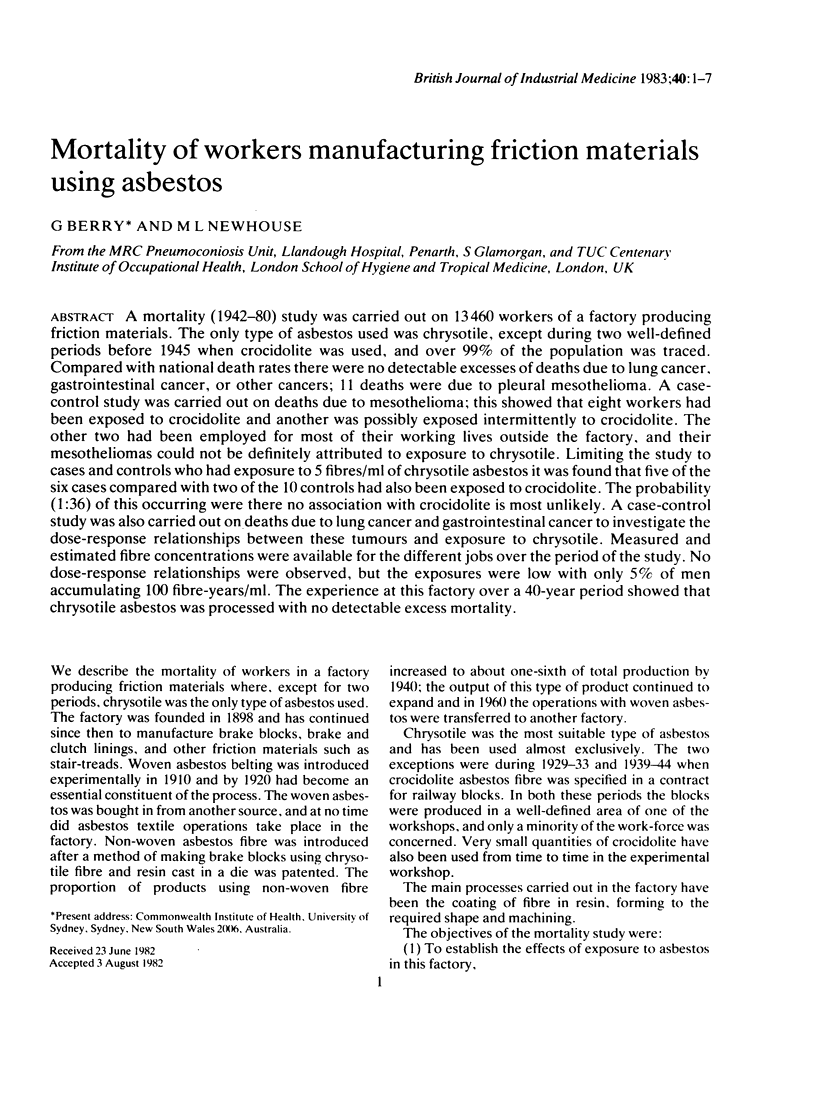

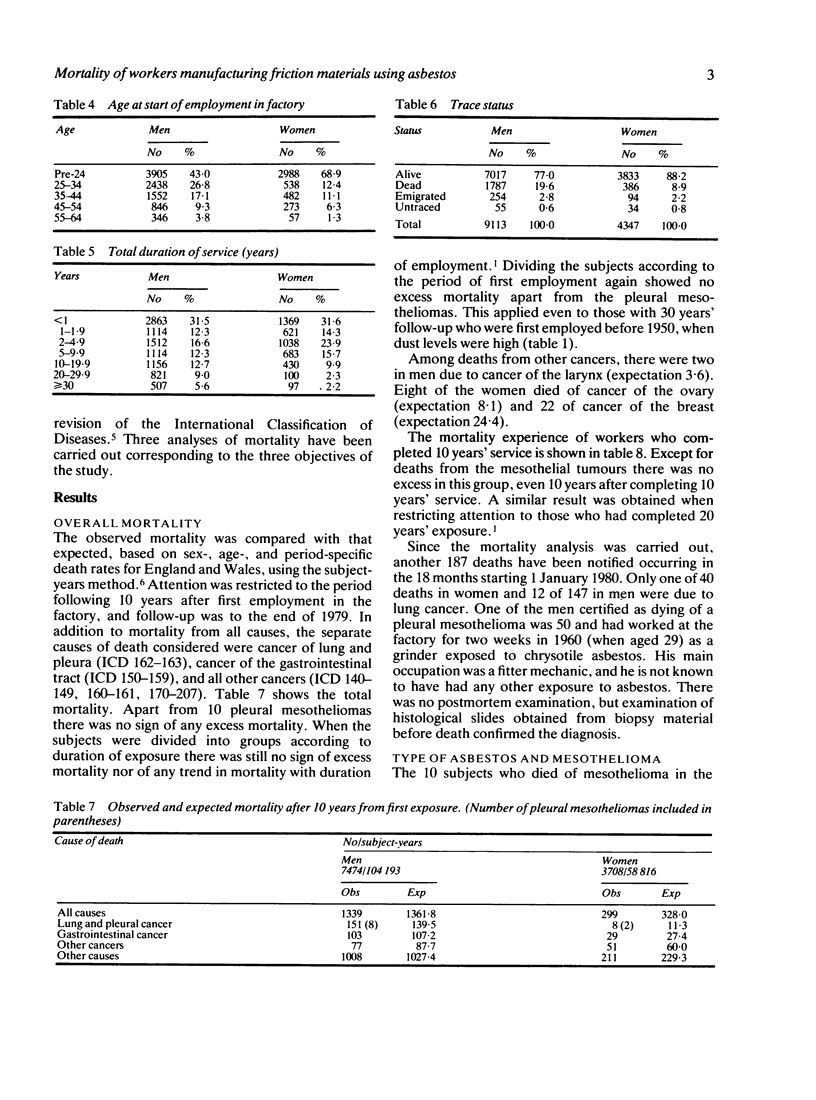
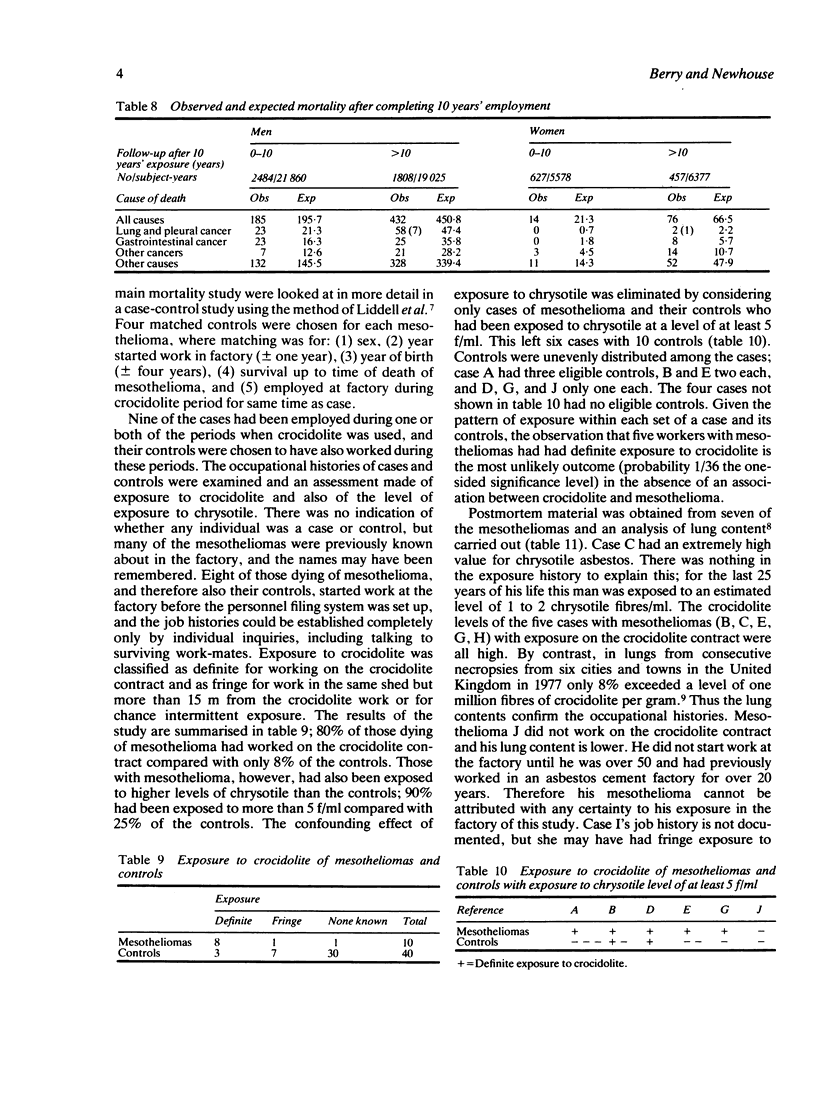
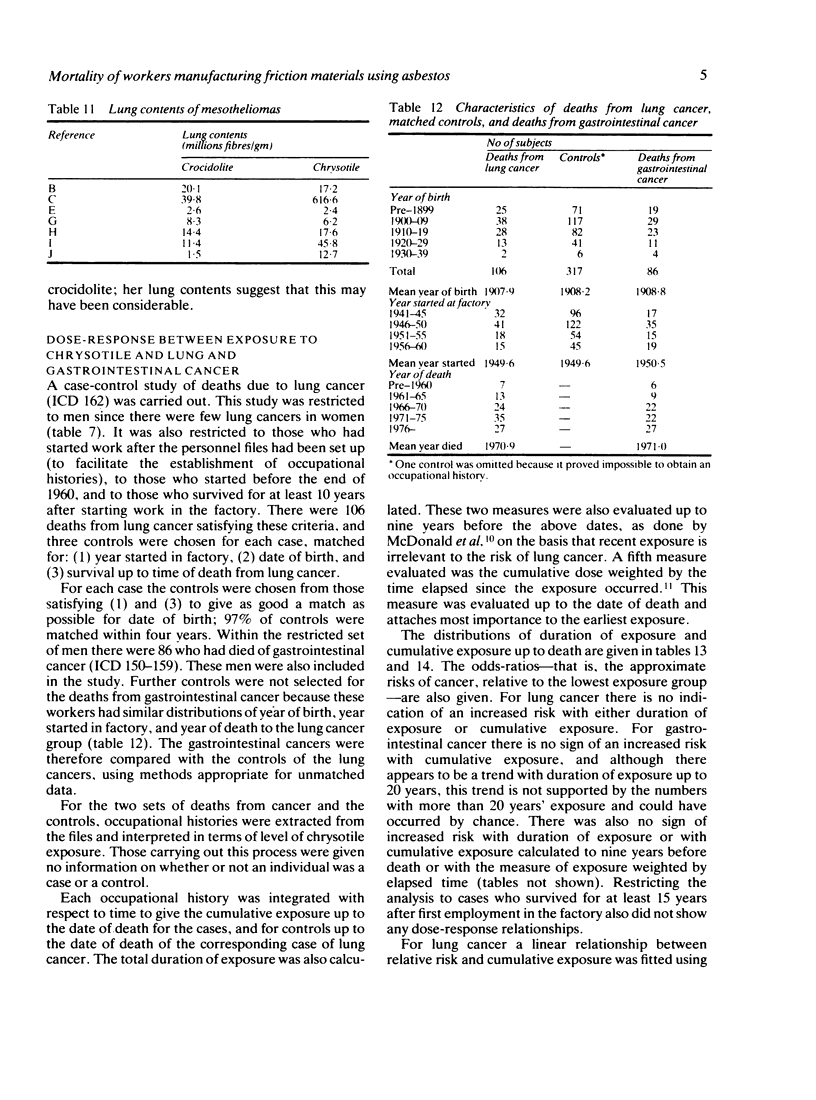
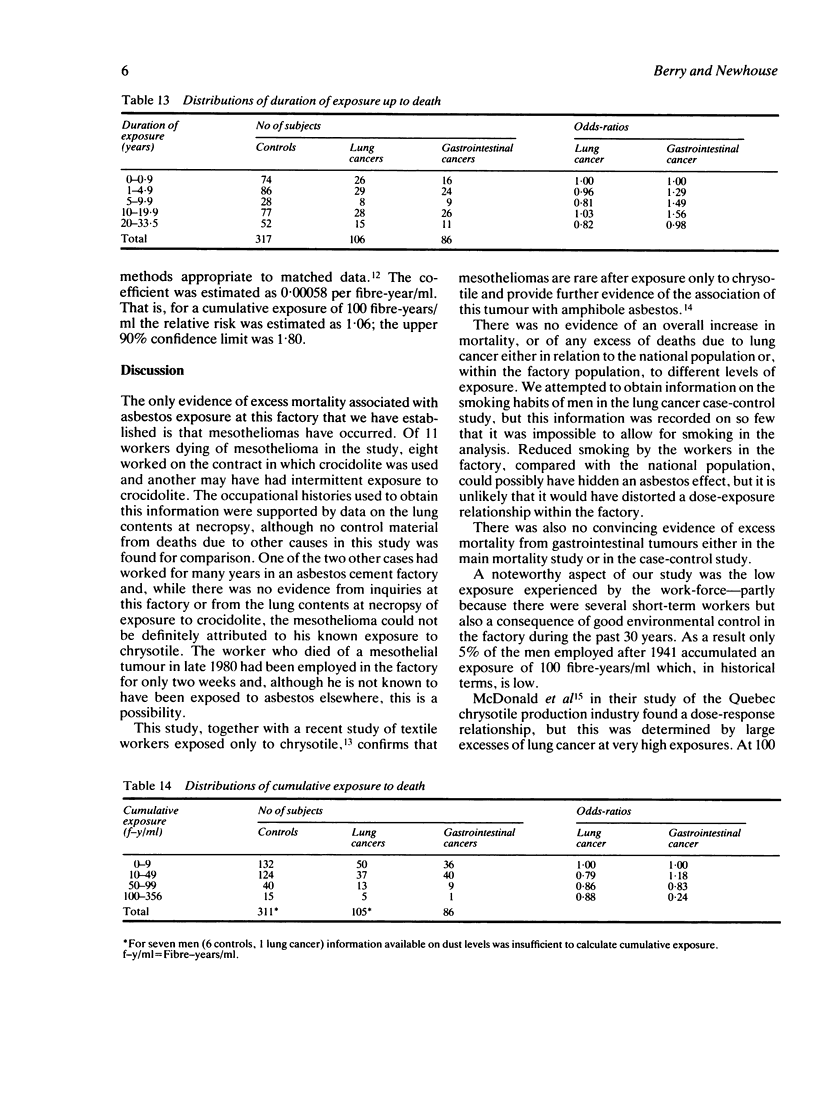
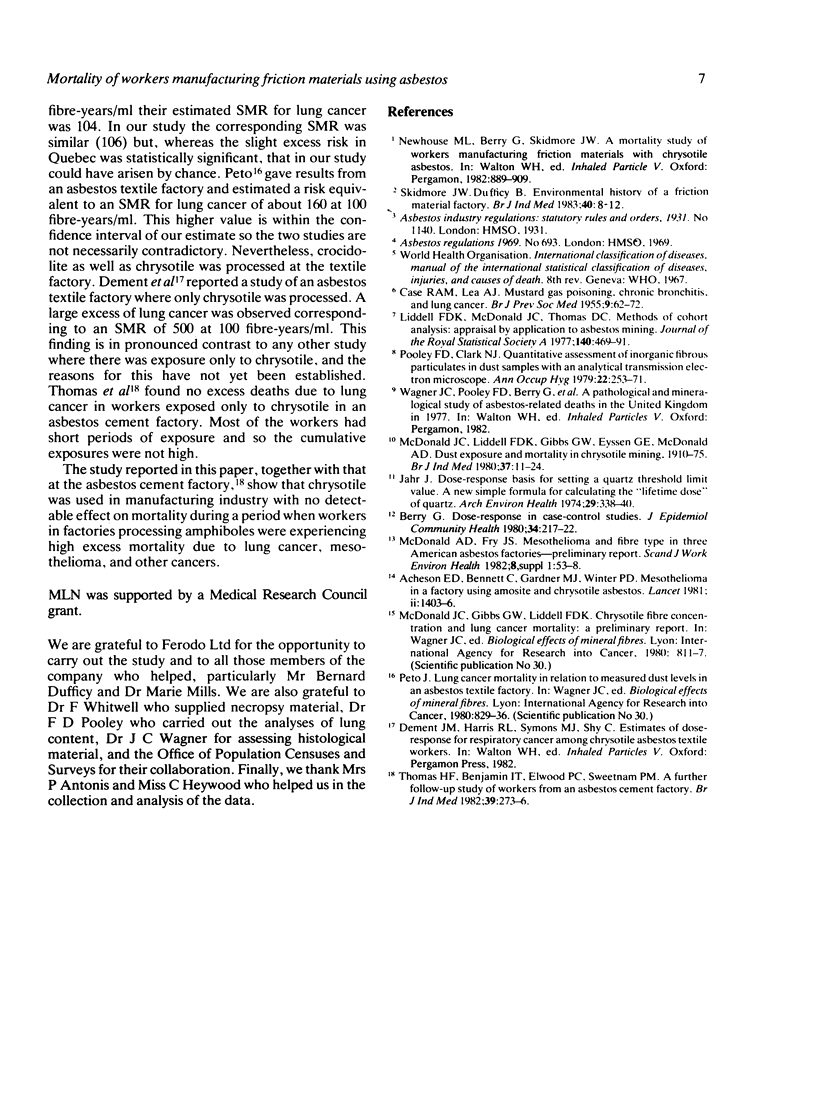
Selected References
These references are in PubMed. This may not be the complete list of references from this article.
- Acheson E. D., Bennett C., Gardner M. J., Winter P. D. Mesothelioma in a factory using amosite and chrysotile asbestos. Lancet. 1981 Dec 19;2(8260-61):1403–1406. doi: 10.1016/s0140-6736(81)92813-0. [DOI] [PubMed] [Google Scholar]
- Berry G. Dose-response in case-control studies. J Epidemiol Community Health. 1980 Sep;34(3):217–222. doi: 10.1136/jech.34.3.217. [DOI] [PMC free article] [PubMed] [Google Scholar]
- CASE R. A., LEA A. J. Mustard gas poisoning, chronic bronchitis, and lung cancer; an investigation into the possibility that poisoning by mustard gas in the 1914-18 war might be a factor in the production of neoplasia. Br J Prev Soc Med. 1955 Apr;9(2):62–72. doi: 10.1136/jech.9.2.62. [DOI] [PMC free article] [PubMed] [Google Scholar]
- Jahr J. Dose-response basis for settling a quartz threshold limit value: a new, simple formula for calculating the "lifetime dose" of quartz. Arch Environ Health. 1974 Dec;29(6):338–340. doi: 10.1080/00039896.1974.10666611. [DOI] [PubMed] [Google Scholar]
- McDonald J. C., Gibbs G. W., Liddell F. D. Chrysotile fibre concentration and lung cancer mortality: a preliminary report. IARC Sci Publ. 1980;(30):811–817. [PubMed] [Google Scholar]
- McDonald J. C., Liddell F. D., Gibbs G. W., Eyssen G. E., McDonald A. D. Dust exposure and mortality in chrysotile mining, 1910-75. Br J Ind Med. 1980 Feb;37(1):11–24. doi: 10.1136/oem.37.1.11. [DOI] [PMC free article] [PubMed] [Google Scholar]
- Newhouse M. L., Berry G., Skidmore J. W. A mortality study of workers manufacturing friction materials with chrysotile asbestos. Ann Occup Hyg. 1982;26(1-4):899–909. [PubMed] [Google Scholar]
- Peto J. Lung cancer mortality in relation to measured dust levels in an asbestos textile factory. IARC Sci Publ. 1980;(30):829–836. [PubMed] [Google Scholar]
- Pooley F. D., Clark N. J. Quantitative assessment of inorganic fibrous particulates in dust samples with an analytical transmission electron microscope. Ann Occup Hyg. 1979;22(3):253–271. doi: 10.1093/annhyg/22.3.253. [DOI] [PubMed] [Google Scholar]
- Skidmore J. W., Dufficy B. L. Environmental history of a factory producing friction material. Br J Ind Med. 1983 Feb;40(1):8–12. doi: 10.1136/oem.40.1.8. [DOI] [PMC free article] [PubMed] [Google Scholar]
- Thomas H. F., Benjamin I. T., Elwood P. C., Sweetnam P. M. Further follow-up study of workers from an asbestos cement factory. Br J Ind Med. 1982 Aug;39(3):273–276. doi: 10.1136/oem.39.3.273. [DOI] [PMC free article] [PubMed] [Google Scholar]


